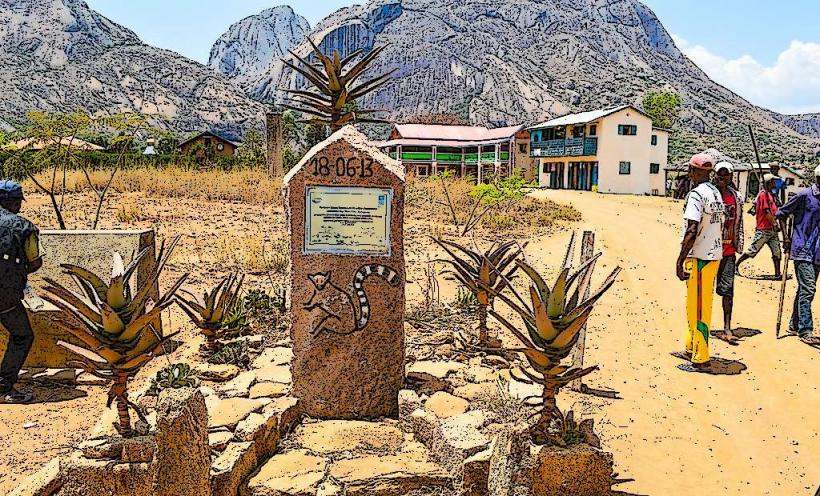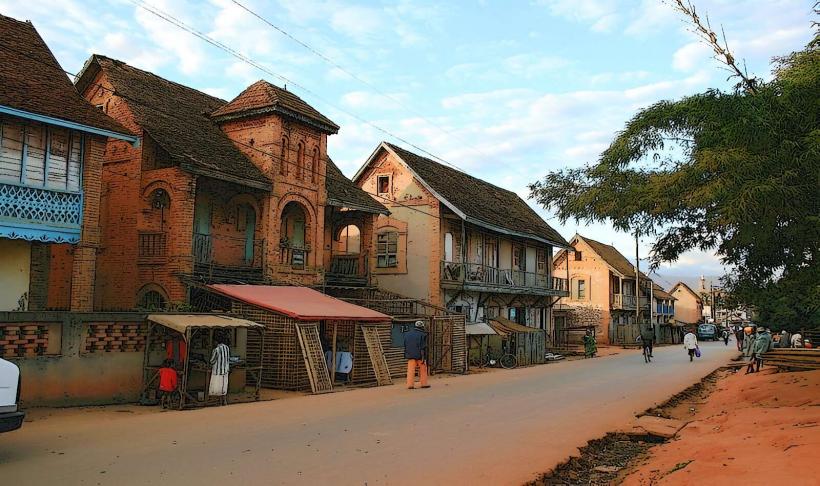Information
Landmark: Antaimoro Paper FactoryCity: Ambalavao
Country: Madagascar
Continent: Africa
The Antaimoro Paper Factory is a notable cultural and historical site located in the town of Antaimoro, situated in the southeastern part of Madagascar, near the city of Fort Dauphin (also known as Tolanaro). The factory is famous for its production of traditional handmade paper, known as Antaimoro paper, which is an integral part of Malagasy heritage.
Antaimoro Paper – History and Significance
Antaimoro paper is made using a unique process that dates back to the 18th century, with origins linked to the Arab and Swahili trade networks that influenced the island's culture. The paper is traditionally crafted from the bark of the Avoha tree (known as the "Broussonetia papyrifera"), which is also referred to as the paper mulberry tree. This tree is indigenous to Madagascar and is highly prized for its fibrous inner bark, which is used in the paper-making process.
The paper is not only a functional material but also a medium for artistic expression. It has been historically used to produce manuscripts, sacred texts, and other important documents that have played a significant role in preserving the island's culture and history. The production of Antaimoro paper is a skill passed down through generations, and it is an excellent example of traditional craftsmanship that has been maintained in Madagascar to this day.
The Paper-Making Process
The process of making Antaimoro paper is meticulous and involves several stages:
Harvesting the Bark: The first step in the paper-making process is harvesting the bark of the Avoha tree. The bark is carefully stripped and processed to separate the fibers.
Preparing the Pulp: The bark fibers are soaked and boiled to soften them. Afterward, they are pounded into a pulp, which is the base material for the paper.
Forming the Sheets: The pulp is spread onto a large wooden frame, where it is left to dry in the sun. The sheets are then peeled off the frame once they have dried sufficiently.
Decorative Elements: One of the distinctive features of Antaimoro paper is its decorative designs. Before the paper is fully dried, flowers, leaves, and other natural elements (such as pressed flowers) are embedded into the pulp to create intricate patterns. These designs give the paper a unique and aesthetic appearance that sets it apart from other types of handmade paper.
Drying and Finishing: After the paper is formed and decorated, it is left to dry completely. The finished product is smooth, strong, and flexible, suitable for various artistic and practical uses.
Uses and Applications
Manuscripts and Sacred Texts: Historically, Antaimoro paper was used for writing religious texts, royal decrees, and other important documents. The paper’s durability and unique quality made it an ideal material for preserving written knowledge.
Art and Craft: Today, the paper is also used to create artworks and handcrafted goods, such as cards, invitations, stationery, and decorative items. The natural beauty and texture of Antaimoro paper have made it a popular material for artisans and crafters.
Cultural and Commercial Significance: The production of Antaimoro paper not only serves as a means of preserving Madagascar's traditional crafts but also as a source of income for the local communities involved in its production. It has become a symbol of Malagasy craftsmanship and is often sold to tourists and collectors.
Antaimoro Paper Factory – Visitors and Tours
Visitors to the Antaimoro Paper Factory can observe the entire process of paper-making from start to finish. The factory is often located near the town of Antaimoro or within the region of Fort Dauphin, and it offers guided tours that explain the history and techniques involved in creating this paper. Tourists can also purchase handcrafted items made from Antaimoro paper as souvenirs.
Cultural Heritage and Preservation
The Antaimoro Paper Factory plays a critical role in preserving a key part of Madagascar's cultural heritage. In a world where modern, industrially produced paper has largely replaced traditional methods, the continued production of Antaimoro paper is an important reminder of Madagascar's rich artisanal traditions and environmental sustainability practices.
Conclusion
The Antaimoro Paper Factory is an important cultural landmark in Madagascar, offering visitors a unique insight into the island’s craftsmanship and traditions. The paper it produces not only holds historical significance but continues to be used in the creation of beautiful, handcrafted products that celebrate Malagasy culture and natural resources. For those visiting Madagascar, the factory is an excellent place to learn about the ancient art of paper-making while supporting local communities and preserving these valuable traditions.






